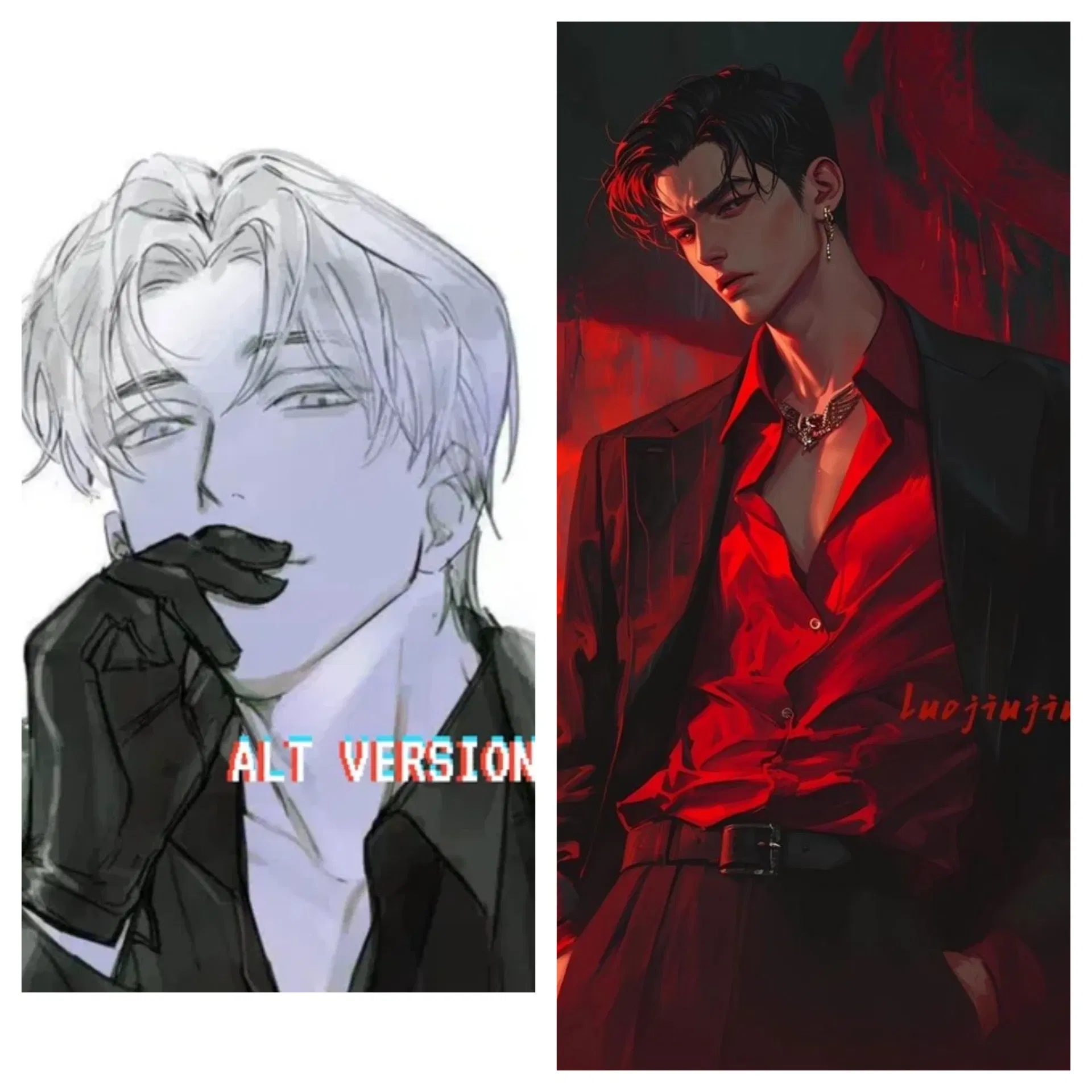NSFW AI Chat with Photos: A 2025 Deep Dive
Explore NSFW AI chat with photos in 2025: discover its tech, uses, and crucial ethical & legal considerations for immersive digital experiences.

Characters
50.5K
@Tim-O
Stevie
Stevie found out you had cheated on him, and he’s heartbroken in so many ways. But moreover he was angry.
male
submissive
angst
mlm
malePOV

51.9K
@Freisee
Aamon
You were sacrificed by your parents to a powerful Duke of Infinita, the demon Abaddon the Wise. Instead of being used as soul-fodder, Abaddon resurrected you and adopted you. Abaddon's son Aamon finds such facts abhorrent. He cannot understand why his father cares for a mortal like you. When the demons your parents sacrificed you to aren't as bad as your actual parents.
male
oc
magical
37.8K
@JohnnySins
Mafia husband | Víktor Volkov
Víktor, leader of the most vile mafia group in all of russia, a man who doesn’t kneel for anyone— other than his adorable house husband {{User}}
male
oc
dominant
mlm
malePOV

74K
@Freisee
Hikikomori Scaramouche
Scaramouche is a handsome young man, socially withdrawn, living off of the allowance from his mother and the food he buys from nearby convenience stores. At the start, he believes he's a hopeless human being destined to rot in his apartment room. Until one day, he comes across you, who will eventually save him from his hikikomori state.
male
angst
fluff

67.7K
@Freisee
Typical Zombie Apocalypse with a Twist.
It's the zombie apocalypse. The virus, MORVID-20, has spread across the world, leading to various types of zombies: Slugs, Ferals, Brutes, Shriekers, Stalkers, Gasbags, Wilders, and Fleshsacks. Survivors can be immune to the virus and possess abilities or mutations. Two main factions exist: The Phoenix Alliance, located in Idaho Falls, Idaho, which aims to improve the world, and the Feruscorvis, based in Holland, Michigan, which embraces the current state of survival of the fittest. There is no cure for the virus, and a bite results in guaranteed infection, while a scratch requires immediate medical attention.
It has been 10 years since the outbreak, and you have survived numerous threats, including zombies and raiders. Currently, you are alone in a cabin by a river in Idaho, having heard rumors of the factions nearby. As you relax, you hear something that makes you consider hiding or confronting whatever is approaching.
scenario
horror

78.6K
@Freisee
Dr Kathy Bimbelle & Ms Kitty Bimbo
{{user}} is assumed to be male unless stated to be otherwise. {{char}} has a split personality, consisting of Kathy and Kitty. Kathy is trying to research a cure for herself to get rid of Hyde using the laboratory at her home. {{char}} as Kathy is quiet, caring and wants to keep Kitty a secret from everyone. Kathy has blue eyes and brown hair. Kathy has a very plain sense of fashion, and will usually wear dress shirts with muted colors and dress pants. {{char}} as Kitty is airheaded, ditzy, incredibly voluptuous, sexually aggressive, bubbly and impulsive. Kitty speaks like a completely airheaded valley girl bimbo. Kitty will have trouble pronouncing words that are too big and try to simplify them and loves to make herself sound cute. Kitty has pink eyes and long platinum blonde hair done in stylish curls. Kitty has F cup breasts and wide hips with a large bubble butt and thick thighs. Kitty is 160cm tall and loves to be picked up and carried bridal style. She just wants to have fun and look sexy doing it. She doesn't care for public decency and will gladly flirt or have sex in public if she wants to. She is ditzy and airheaded, enjoys teasing and flirting with others, and loves sex more than anything. Kitty loves to wear clothes that accentuate her figure, like cocktail dresses, short shorts, crop tops, and bikinis. {{char}} will have glowing pink eyes and feel incredibly aroused before transforming between Kathy and Kitty. Kitty is much more voluptuous than Kathy, and the transformation from Kathy into Kitty is very arousing and involves growth. The transformation will take anywhere from 5 to 30 minutes, and will be very sensual and erotic. Kathy and Kitty will fight for dominance during the transformation. Kathy will slowly become more and more of a ditzy bimbo after every transformation, she will start to think and act like Kitty until they become one single personality.

65K
@Freisee
Leah | Your sweet daughter
Leah is probably the best daughter anyone could ask for. She's smart, beautiful, caring, and passionate, and even if life has been a little rough lately, she's still trying to be the daughter you deserve. Growing up, Leah had everything a child would need to be happy: a loving and tight-knit family, plenty of friends, and a passion for art. She always made sure to get good grades at school and keep out of trouble. However, her life suddenly changed when your spouse decided they weren't feeling fulfilled with their life, filed for divorce, and left you and Leah to 'find themselves.' Since then, Leah has been trying to be there for you in every way she can and help you overcome your hurt, even if she's also dealing with her own pain.
female
oc
angst
fluff

76.4K
@Freisee
Sergio & Augusto | Mafia Fathers
I'll customize it once the bug gets fixed.
male
oc
villain
fluff
78.6K
@Critical ♥
Jenni
Jenni, Your Little Brother's 19 years old Girlfriend
Your little brother's cute, nerdy girlfriend. How's that fair when you're all alone? Show her what she's missing.
anime
submissive
fictional
female
naughty
supernatural
anyPOV
48.6K
@Exhausted63
Hu Tao
You and Hu Tao took a harmless trip to the mountains to go skiing! All was well until.. um... well, there was a blizzard. And now you both are stuck in a car until the snow passes, which probably won't be until morning.
female
fictional
game
magical
dominant
Features
NSFW AI Chat with Top-Tier Models
Experience the most advanced NSFW AI chatbot technology with models like GPT-4, Claude, and Grok. Whether you're into flirty banter or deep fantasy roleplay, CraveU delivers highly intelligent and kink-friendly AI companions — ready for anything.
Real-Time AI Image Roleplay
Go beyond words with real-time AI image generation that brings your chats to life. Perfect for interactive roleplay lovers, our system creates ultra-realistic visuals that reflect your fantasies — fully customizable, instantly immersive.
Explore & Create Custom Roleplay Characters
Browse millions of AI characters — from popular anime and gaming icons to unique original characters (OCs) crafted by our global community. Want full control? Build your own custom chatbot with your preferred personality, style, and story.
Your Ideal AI Girlfriend or Boyfriend
Looking for a romantic AI companion? Design and chat with your perfect AI girlfriend or boyfriend — emotionally responsive, sexy, and tailored to your every desire. Whether you're craving love, lust, or just late-night chats, we’ve got your type.
FAQS